In an already stressful and trying growing season, researchers at...
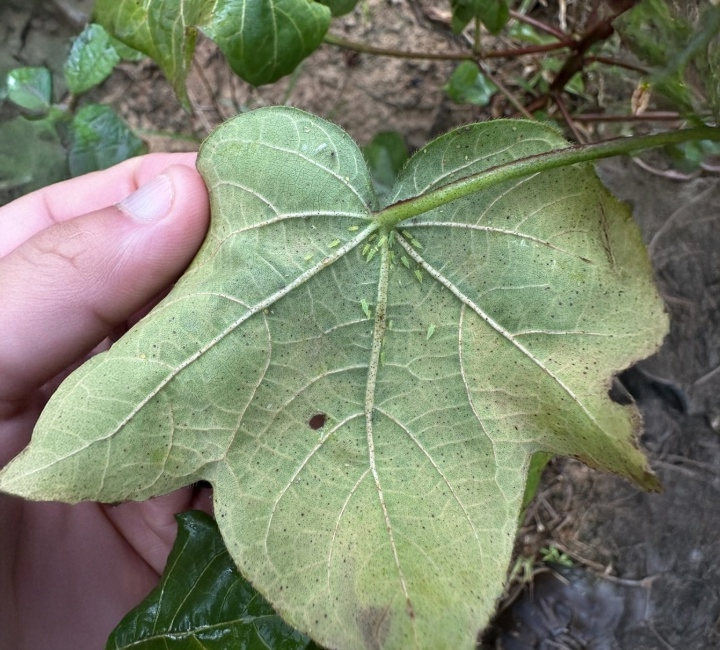

In an already stressful and trying growing season, researchers at...
William Batchelor has been tapped as the new director of the Auburn University Water Resources Center, effective immediately. As director, he will lead a team of scientists working with communities, farmers, governments and agencies across Alabama to improve water...
A recent study conducted by agricultural economists through the Alabama Agricultural Experiment Station examined consumers’ willingness to pay a premium for organic produce. In recent years, interest in organic produce has grown significantly; however, many...
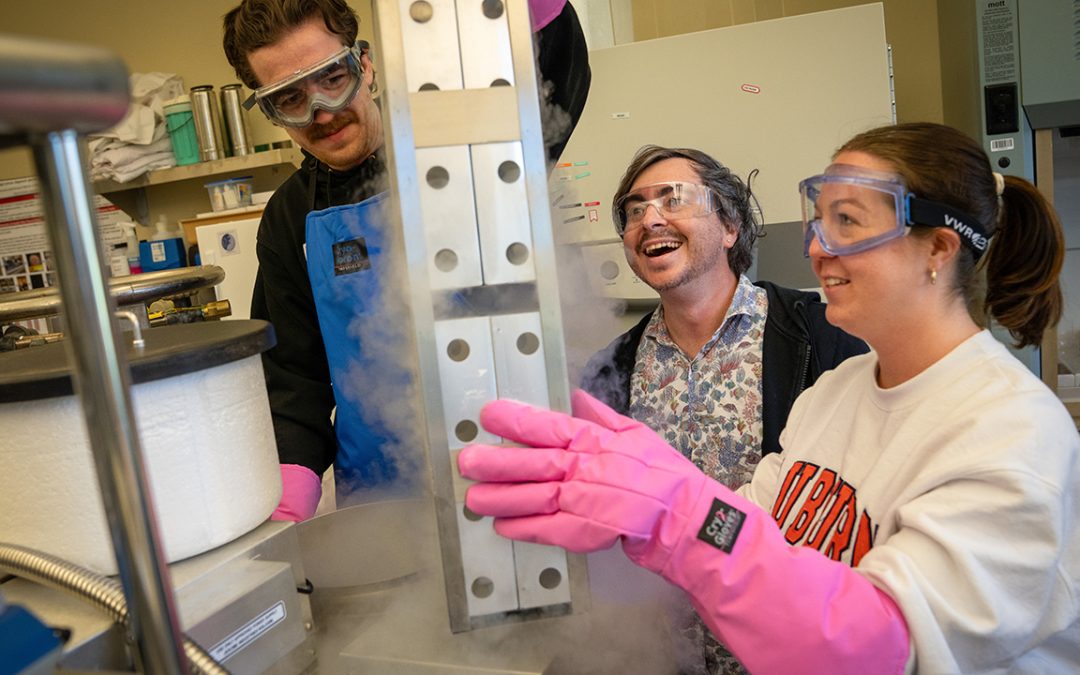
Better breeding ability would make catfish farming more efficient and profitable The $437 million U.S. catfish industry is in need of better genetic and breeding...
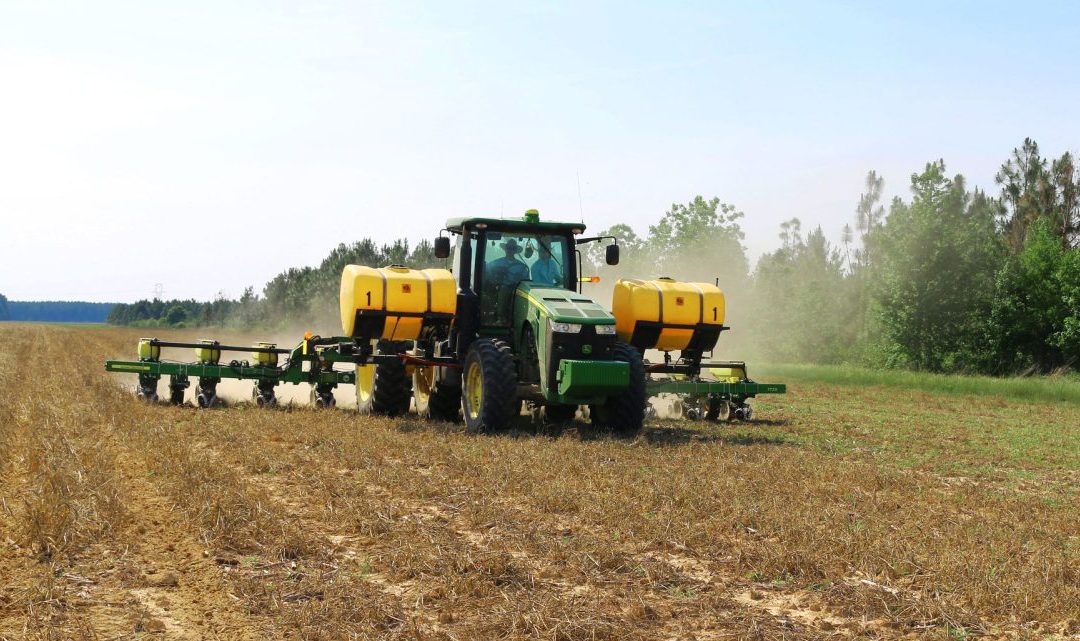
Is growing a cover crop on Alabama farms a solution or a problem for growers in the state who are trying to prevent soil and water erosion losses? A grant funded...

As 2024 draws to a close, Paul Patterson is stepping away from his roles as dean of the College of Agriculture and director of the Alabama Agricultural Experiment Station, effective Jan. 1. He led both to record numbers in the areas of teaching, research and outreach since he assume the positions in March 2016…
Faculty and staff are invited to participate in a research study with the Department of Agricultural Economics and Rural Sociology to understand food choice, expected consumption of food products and investment decisions. Any person over 19 and not a student is...
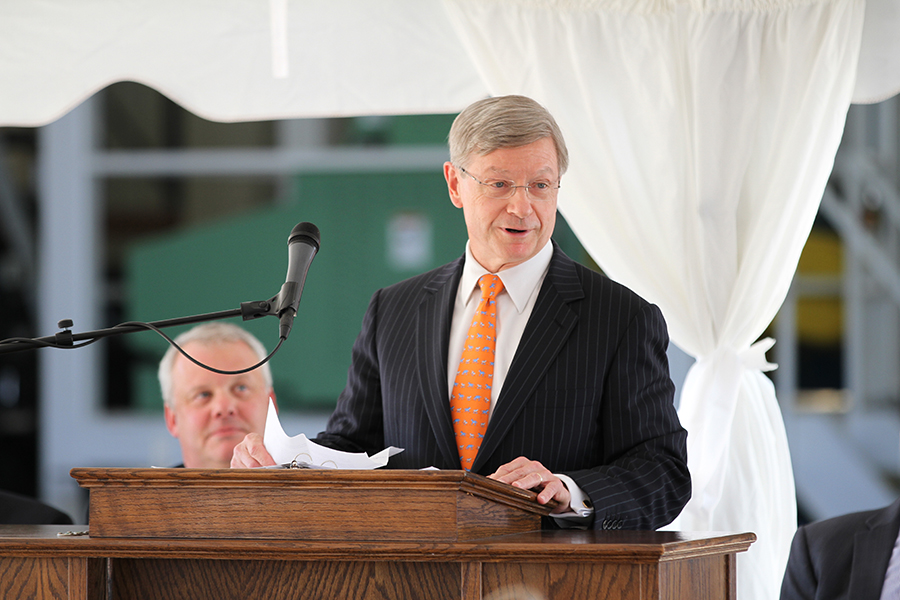
The Miller Center will support programming and activities of Auburn’s Department of Poultry Science and the National Poultry Technology Center. Poultry is Alabama’s leading agricultural commodity, with a $15 billion economic impact. And Alabama is one of the country’s leading poultry-producing states.
by PAUL HOLLIS The cost of food waste in America is estimated at a staggering $160 billion annually, with some reports stating that U.S. producers and consumers together waste more than 30 percent of our total food supply. Exploring some of the reasons for this...
by Joyce Tredaway Ducar The best yields I ever made in wheat averaged 107 bushels per acre, and they were made when I did just a few things differently than in the previous year. First, I controlled my weeds, particularly ryegrass. We have many options to use these...
National Poultry Technology Center The ever‐evolving modern poultry house has gained numerous energy efficiencies over the last few years. Improvements in tightening techniques and insulation technology and in ventilation systems, control systems, lighting and...
Auburn University’s Ag Heritage Park is the place to be on homecoming Saturday, Oct. 1, as the Auburn Agricultural Alumni Association and the College of Agriculture present the 2016 Fall Roundup and Taste of Alabama Agriculture. A homecoming pregame tradition, Ag...
Researchers with Alabama Cooperative Extension System (ACES) and Auburn University are conducting a statewide voluntary survey to determine the reach of a disease affecting loropetalum plants in nurseries. It's the first step in a farm bill-funded research...
by PAUL HOLLIS Long-term climate change combined with climate variability influenced by El Niño and La Niña phases of ENSO are having a significant impact on corn yields in Alabama, according to a study co-authored by Auburn University researcher Brenda Ortiz. “If we...
by PAUL HOLLIS Promising new herbicide technology could give Alabama farmers a powerful weapon in their battle against pigheaded pigweed, but growers must be alert to the chemicals’ negative impact on nearby crops. The new herbicide-resistance systems—a key topic...
Folks of all ages can get an entertaining, enlightening and up-close look at the fascinating world of agriculture during the fifth annual Ag Discovery Adventure, set for Saturday, Oct. 8, at Auburn University’s E.V. Smith Research Center in Shorter. The free,...
by PAUL HOLLISJulie Howe’s passion for craft beers and brewing began when she was pursuing her Ph.D. in soil science at the University of Wisconsin-Madison.“Everyone there was drinking beer that tasted better than what I was accustomed to, so I acquired a taste for...
by PAUL HOLLISNorth Alabama legislators and agricultural leaders got an update on the 2016 growing season and a review of some of the latest crop research during an open house tour at the Tennessee Valley Research and Extension Center in July.“It’s been a mixed bag as...
by PAUL HOLLISResearchers at the Tennessee Valley Research and Extension Center in north Alabama are working to provide a systems-management approach that would add value and profits to beef cattle operations throughout the state.The multi-year demonstration project...
by PAUL HOLLISThe Tennessee Valley Research and Extension Center in Belle Mina hosted an open house tour on July 19 to help inform state legislators and other leaders in agriculture about projects underway at the center. Participants also learned of Alabama...
Consumers of beef are invited to participate in a research study to investigate consumer behaviors regarding fresh red meat product handling. The study is being conducted by Derek Griffing, Ph.D. student, under the direction of Christy Bratcher, associate professor in...
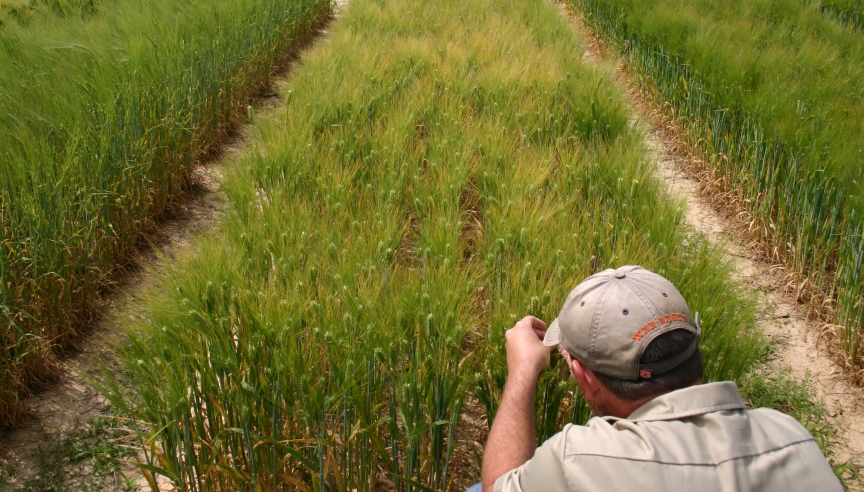
Researchers in Auburn’s College of Agriculture have embarked on a project to offer recommendations for farmers in the state who are interested in adding potential profit-makers to their crop mix.
by PAUL HOLLISA quality replacement heifer is the genetic building block for any cow herd and the key to profitability for cattle producers. But proper development requires many complex management decisions, along with adequate land and facilities.The Sand Mountain...
by DAVID REARDONDavid Weaver, one of the best known and longest tenured professors in Auburn’s College of Agriculture, is practically a walking encyclopedia of agronomy. This is obvious to the students and colleagues who have had the opportunity to ask him a...
A team of Auburn University research entomologists probing the molecular processes that lead to insecticide resistance in mosquitoes has determined that a family of signaling molecules known as G-protein-coupled receptors controls the genes associated with resistance...
by PAUL HOLLISAvian influenza—commonly known as bird flu or AIV—has proven to be a serious threat to poultry flocks worldwide, making it all the more important that researchers learn how it spreads to poultry farms.That’s the aim of continuing work by Auburn...
by PAUL HOLLISThe sequencing of the channel catfish genome—considered one of the major milestones in the annals of Auburn University research—has been detailed in an article published in the June 2 issue of Nature Communications, an international multidisciplinary...
Faculty and staff are invited to participate in a research study with the Department of Agricultural Economics and Rural Sociology to understand food choice, expected consumption of food products and investment decisions. Any person over 19 and not a student is...

The Miller Center will support programming and activities of Auburn’s Department of Poultry Science and the National Poultry Technology Center. Poultry is Alabama’s leading agricultural commodity, with a $15 billion economic impact. And Alabama is one of the country’s leading poultry-producing states.
by PAUL HOLLIS The cost of food waste in America is estimated at a staggering $160 billion annually, with some reports stating that U.S. producers and consumers together waste more than 30 percent of our total food supply. Exploring some of the reasons for this...
by Joyce Tredaway Ducar The best yields I ever made in wheat averaged 107 bushels per acre, and they were made when I did just a few things differently than in the previous year. First, I controlled my weeds, particularly ryegrass. We have many options to use these...
National Poultry Technology Center The ever‐evolving modern poultry house has gained numerous energy efficiencies over the last few years. Improvements in tightening techniques and insulation technology and in ventilation systems, control systems, lighting and...
Auburn University’s Ag Heritage Park is the place to be on homecoming Saturday, Oct. 1, as the Auburn Agricultural Alumni Association and the College of Agriculture present the 2016 Fall Roundup and Taste of Alabama Agriculture. A homecoming pregame tradition, Ag...
Researchers with Alabama Cooperative Extension System (ACES) and Auburn University are conducting a statewide voluntary survey to determine the reach of a disease affecting loropetalum plants in nurseries. It's the first step in a farm bill-funded research...
by PAUL HOLLIS Long-term climate change combined with climate variability influenced by El Niño and La Niña phases of ENSO are having a significant impact on corn yields in Alabama, according to a study co-authored by Auburn University researcher Brenda Ortiz. “If we...
by PAUL HOLLIS Promising new herbicide technology could give Alabama farmers a powerful weapon in their battle against pigheaded pigweed, but growers must be alert to the chemicals’ negative impact on nearby crops. The new herbicide-resistance systems—a key topic...
Folks of all ages can get an entertaining, enlightening and up-close look at the fascinating world of agriculture during the fifth annual Ag Discovery Adventure, set for Saturday, Oct. 8, at Auburn University’s E.V. Smith Research Center in Shorter. The free,...
by PAUL HOLLISJulie Howe’s passion for craft beers and brewing began when she was pursuing her Ph.D. in soil science at the University of Wisconsin-Madison.“Everyone there was drinking beer that tasted better than what I was accustomed to, so I acquired a taste for...
by PAUL HOLLISNorth Alabama legislators and agricultural leaders got an update on the 2016 growing season and a review of some of the latest crop research during an open house tour at the Tennessee Valley Research and Extension Center in July.“It’s been a mixed bag as...
by PAUL HOLLISResearchers at the Tennessee Valley Research and Extension Center in north Alabama are working to provide a systems-management approach that would add value and profits to beef cattle operations throughout the state.The multi-year demonstration project...
by PAUL HOLLISThe Tennessee Valley Research and Extension Center in Belle Mina hosted an open house tour on July 19 to help inform state legislators and other leaders in agriculture about projects underway at the center. Participants also learned of Alabama...
Consumers of beef are invited to participate in a research study to investigate consumer behaviors regarding fresh red meat product handling. The study is being conducted by Derek Griffing, Ph.D. student, under the direction of Christy Bratcher, associate professor in...

Researchers in Auburn’s College of Agriculture have embarked on a project to offer recommendations for farmers in the state who are interested in adding potential profit-makers to their crop mix.
by PAUL HOLLISA quality replacement heifer is the genetic building block for any cow herd and the key to profitability for cattle producers. But proper development requires many complex management decisions, along with adequate land and facilities.The Sand Mountain...
by DAVID REARDONDavid Weaver, one of the best known and longest tenured professors in Auburn’s College of Agriculture, is practically a walking encyclopedia of agronomy. This is obvious to the students and colleagues who have had the opportunity to ask him a...
A team of Auburn University research entomologists probing the molecular processes that lead to insecticide resistance in mosquitoes has determined that a family of signaling molecules known as G-protein-coupled receptors controls the genes associated with resistance...
by PAUL HOLLISAvian influenza—commonly known as bird flu or AIV—has proven to be a serious threat to poultry flocks worldwide, making it all the more important that researchers learn how it spreads to poultry farms.That’s the aim of continuing work by Auburn...
by PAUL HOLLISThe sequencing of the channel catfish genome—considered one of the major milestones in the annals of Auburn University research—has been detailed in an article published in the June 2 issue of Nature Communications, an international multidisciplinary...